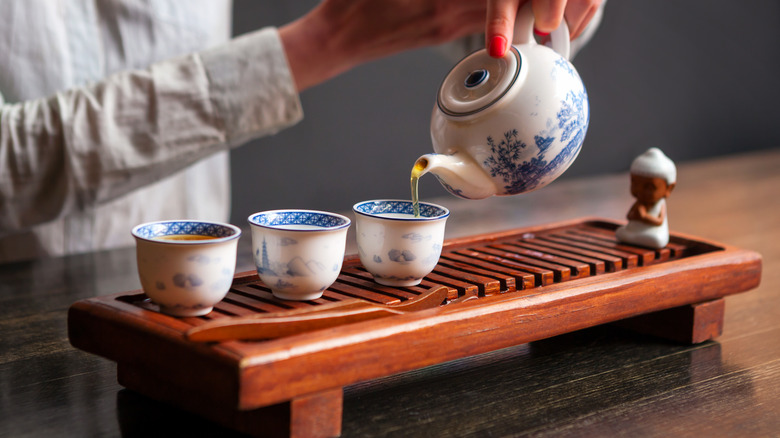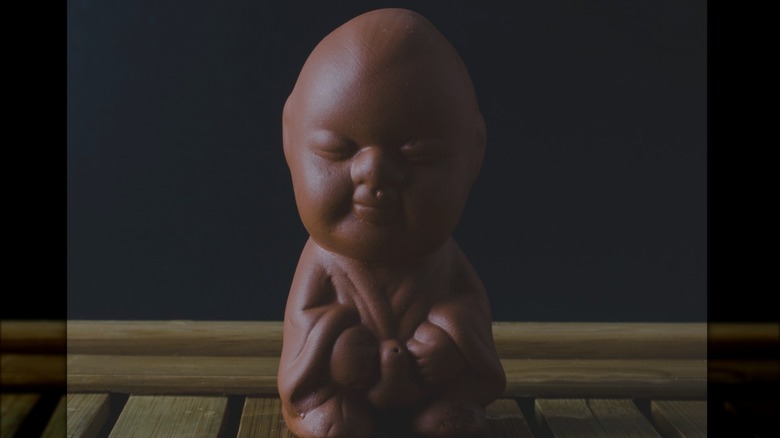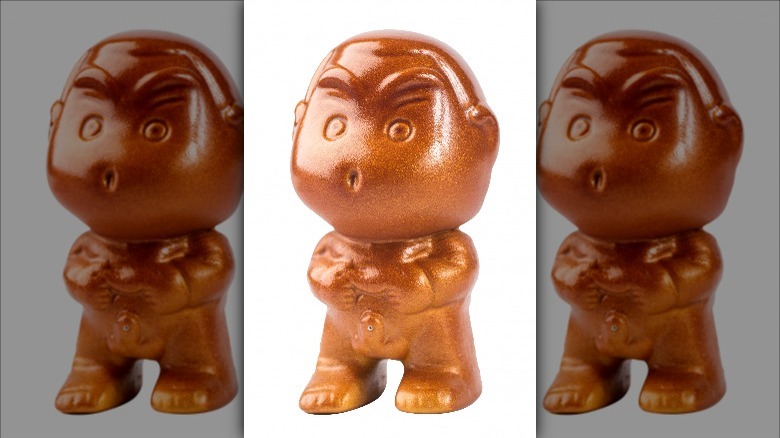The Playful Way Chinese Tea Connoisseurs Make Sure Water Is Hot Enough
Most of us don't think too much when it comes to making tea. Whether we're using tea bags or loose-leaf tea, we'd generally boil water and wait for that to cool down a bit (or not) before pouring the hot liquid into a mug or pot. We then wait a minute or two for the tea to brew and then, as far as we're concerned, the hot drink is ready to go.
But the process of brewing Chinese tea is not as straightforward as that, particularly if we're steeping a pot of good quality oolong, black, or Dragon Well tea. Depending on what is being brewed, these teas are best brewed using fresh water which is boiled and then left to cool slightly so its temperature sits between 140 to 200 degrees Fahrenheit.
If the water isn't the right temperature, it is certain that the tea will not taste as it should, since the tea can be "burnt" by hot water — which changes the flavor profile of the brew. Alternatively, when water is too cold, the tea becomes a little more than colored liquid, because tepid water is unable to coax leaves into giving up their tannins.
Some connoisseurs use tea pets to test their water
Instead of relying on thermometers to get water temperatures right, Chinese tea connoisseurs are more likely to turn to clay tea pets which are used during traditional tea ceremonies. These figurines are usually shaped like animals, vegetables, or mythical creatures and are usually made with the same material that teaware manufacturers use to make high-grade pots: purple Yixing mud known as zi ni or zi sha. The material is popular because it is said to be porous and can retain heat well.
But rather than picking a lucky or auspicious tea pet, most are also likely to adopt a figure known simply as "pee pee boy". While the statue comes in several styles, pee pee boy is generally executed as a bald young boy with an oversized head and a small, exposed penis.
Pee pee boy is prepped for action by being dunked in a container filled with room temperature water, and then positioned on the tea tray. After water for brewing tea is boiled and cooled slightly, it is then poured over the boy's head. If the water temperature is just right, the figurine releases a thin, powerful spray of water that shoots out in a long arch.
Pee pee boy's place of honor in a Chinese tea ceremony has some researchers wondering whether, in fact, this irreverent figurine may actually be descended from the world's first thermometers that first saw action during the Tang dynasty, which dates to between 618 and 906 CE.
How pee pee boy works
If anything, pee pee boy doesn't appear to be the product of a quirky design whim, because researchers who studied the figurine have identified thermal expansion as the reason why the gadget can eject water with such force after the figurine comes in contact with hot water.
In a 2016 open-access study published in Scientific Reports, researchers found that immersing tea pets like pee pee boy in room-temperature water left the dolls with an air pocket within its upper chamber, or in this case, pee pee boy's head. When hot water is poured on top of the doll, the room-temperature water located inside pee pee boy's bottom half is forced out by the air trapped inside its top half.
Researchers further confirmed that the length and power of the stream are directly related to the temperature of the water that had been poured over pee pee boy's head. Experiments told researchers what tea connoisseurs knew all along: that pee pee boy was an "adequate sensor" for tea brewing.
If all this sounds like an awful lot to go through for a hot beverage, know that some of the world's most expensive teas can cost several thousand dollars per pound. This makes pee pee boy and other tea pets like him an entertaining yet indispensable way to ensure no brews are wasted.


